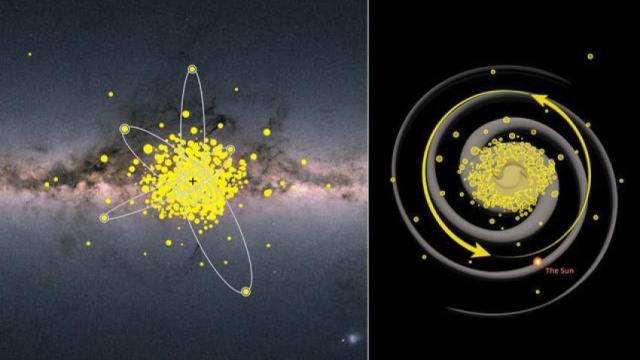A group of astronomers comprising the Pristine Inner Galaxy Survey (PIGS) just found a large group of ancient stars circling the galaxy’s centre in surprisingly orderly fashion.
The astronomical team’s work is the largest set of detailed observations yet taken of these very old metal-poor stars orbiting near the core of the Milky Way. The research was presented this week at the National Astronomy Meeting 2023 at the University of Cardiff.
“It is exciting to think that we are seeing stars that formed in the earliest phases of the Milky Way, previously largely out of reach,” said Anke Arentsen, an astronomer at the University of Cambridge and co-author of the research, in a Royal Astronomical Society release. “These stars likely formed less than a billion years after the Big Bang, so are relics from the early Universe.”
The oldest stars are mostly composed of the light elements hydrogen and helium. They formed before heavier elements made their way into stars like our own Sun. The first stars in the universe didn’t show up until the Whole Shebang was about 100 million years old (a fraction of its current age, which is nearing 14 billion years old).
The oldest known star is a nearly 13-billion-year-old speck named Earendel, which astronomers revealed in 2022. Earendel was spotted thanks to a quirk of spacetime known as gravitational lensing, by which the gravitational field of some massive object magnifies the light in the more distant universe.
The most ancient stars in our Milky Way are generally thought to lurk near the galactic centre, but their study is hampered by the voluminous dust that sits between us and them.
Interstellar dust is the reason observatories like the Webb Space Telescope image at infrared wavelengths, allowing the nascent observatory to cut through the dust to see ancient objects shrouded in the rejectamenta of space.
The PIGS project used a particular imaging filter on the Canada-France-Hawaii Telescope to spot candidate stars for their inner galactic study, and the candidates were confirmed using spectroscopic observations by the Anglo-Australian Telescope.
The PIGS group previously used these metal-poor stars to determine the metallicity of the galaxy’s “peanut-shaped” bulge.
In the new work, the team found that the older stars moved more chaotically, though they generally maintained rotations around the galactic centre. The stars generally spent most of their lives in this intimate area of the galaxy, which surrounds the supermassive black hole Sagittarius A*, an object roughly four million times the mass of our Sun.
Understanding the behaviour of these ancient stars could help explain the evolution of our galaxy, as well as those similar to it.
